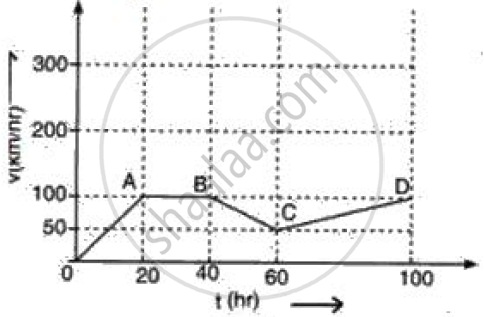Advertisements
Advertisements
प्रश्न
Figure represents graphically the velocity of a car moving along a straight road over a period of 100 hours.
Calculate the acceleration along AB and the retardation along BC.
उत्तर

Acceleration along AB= (100 - 100)/(40 -20) = 0 ms-2
Retardation along CD= (100 - 50)/ (100 - 60) = 50/40 = 1.25 ms-2
APPEARS IN
संबंधित प्रश्न
What is meant by the term retardation? Name its S.I. unit.
Define the term acceleration due to gravity. State its average value.
A ball is rolling from A to D on a flat and smooth surface. Its speed is 2 cm/s. On reaching B, it was pushed continuously up to C. On reaching D from C, its speed had become 4 cm/s. It took 2 seconds for it to go from B to C. What is the acceleration of the ball as it goes from B to C?

From the velocity – time graph given below, calculate deceleration in region BC.

A motor bike running at 90 kmh−1 is slowed down to 18 kmh−1 in 2.5 s. Calculate
- acceleration
- distance covered during slow down.
A body falls towards the earth. Does it have positive or negative acceleration?
State if the following situation is possible:
A body moving with a constant velocity in an accelerated motion.
A body has an acceleration of -3.5 ms-2. What is its retardation?
What do you mean by constant acceleration?
The speed of a particle is constant. Will it have acceleration? Justify with an example.
